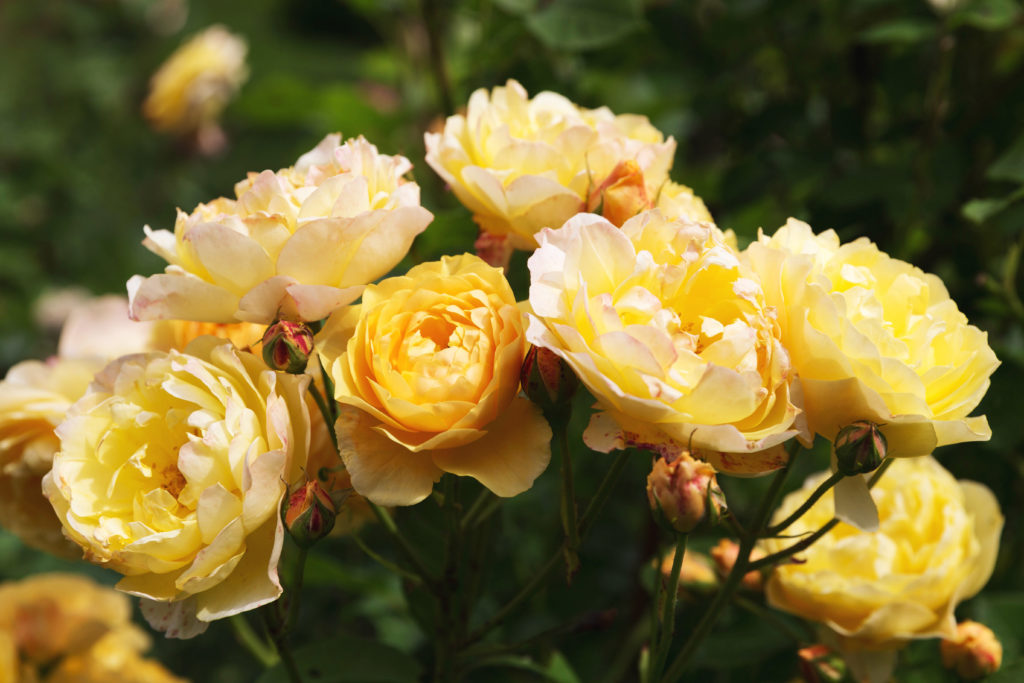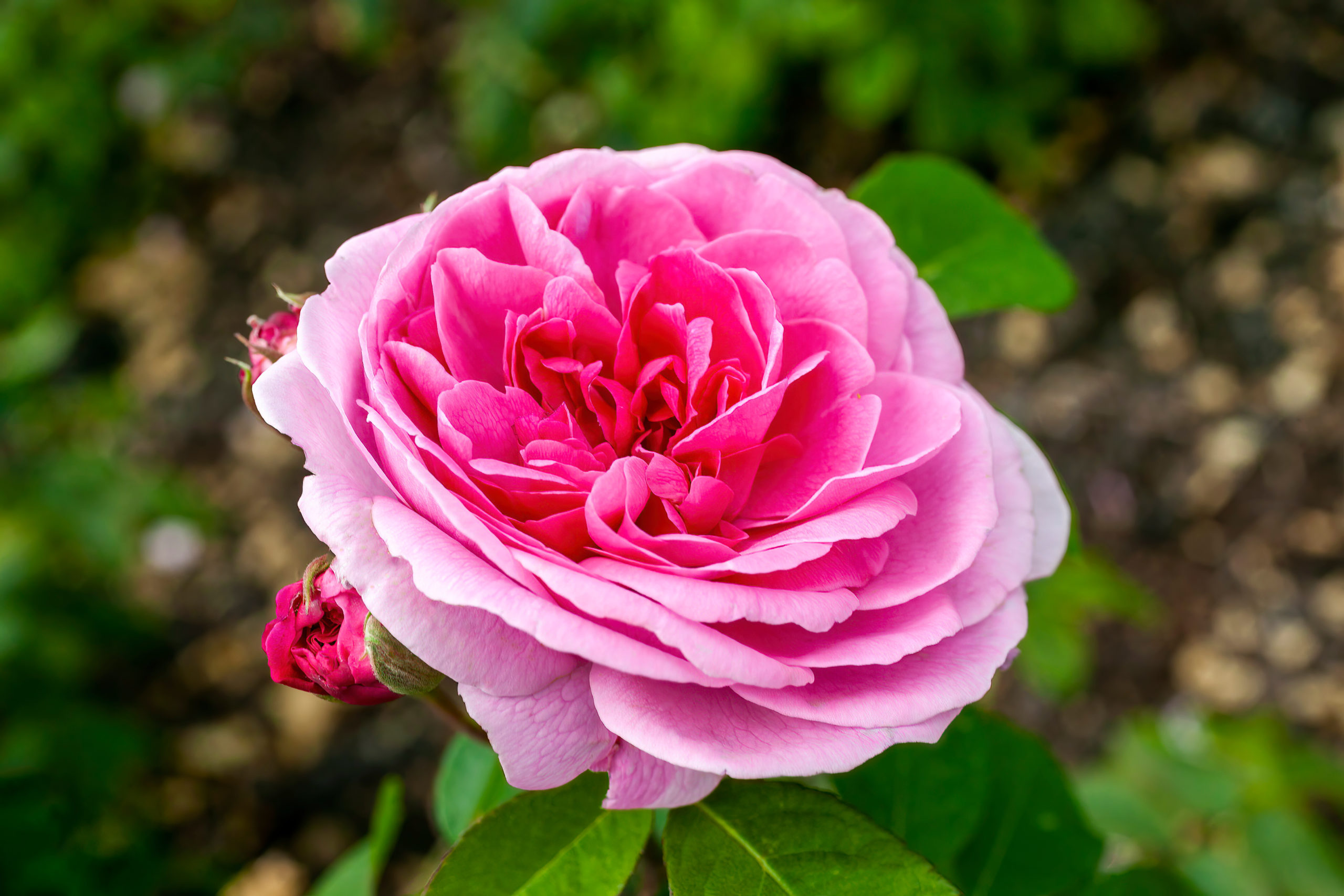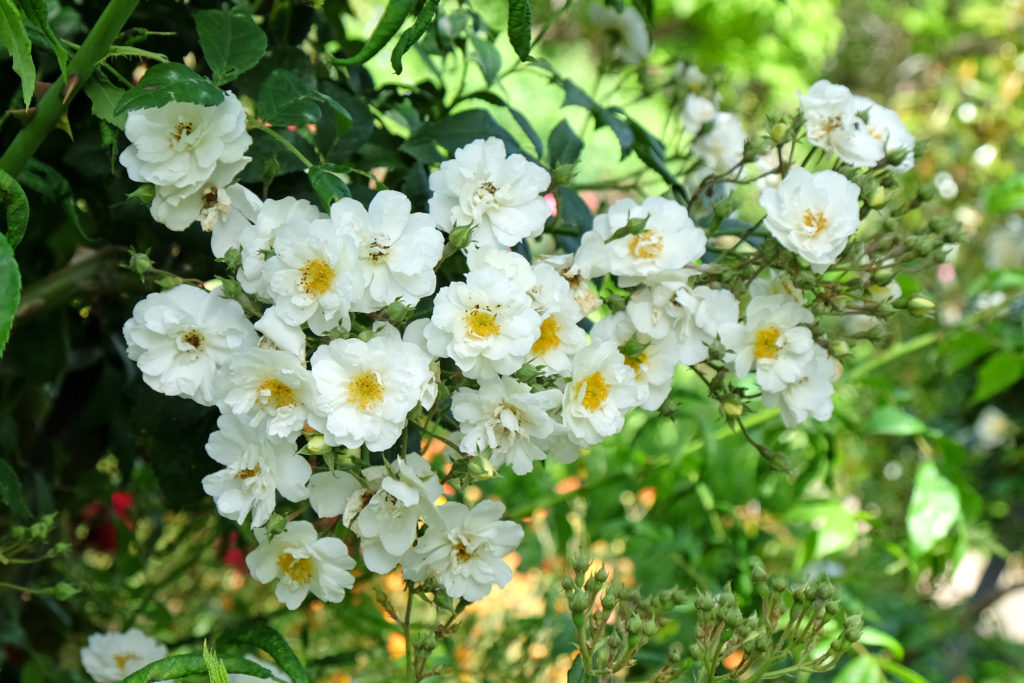These roses combine the charm and fragrance of old-fashioned roses with the repeat-flowering and disease resistance of modern varieties. Known for their beautifully formed, full-petalled blooms and rich fragrances, English roses bring a romantic and timeless appeal to any garden. They are available in a wide range of colours, from soft pastels to deep, rich hues, and are loved for their ability to blend seamlessly into both traditional and contemporary planting schemes.
English roses are incredibly versatile, with many varieties suitable for growing as shrubs, hedges, or climbers. Their strong fragrance is another defining characteristic, with scents ranging from fruity and musky to myrrh-like and tea-scented. Whether planted in mixed borders, cottage gardens, or as focal points, these roses are a wonderful addition to any outdoor space.

Common Types of English Roses
There are numerous varieties of English roses, each with unique characteristics in terms of colour, fragrance, and growth habit. Some of the most popular and highly regarded include:
- ‘Gertrude Jekyll’ – One of the most well-known English roses, this variety produces large, deeply pink blooms with a strong old-rose fragrance. It can be grown as a shrub or trained as a short climber.
- ‘Munstead Wood’ – A striking deep crimson rose with velvety petals and a strong fruity fragrance. Its compact growth habit makes it perfect for the front of borders or container planting.
- ‘Graham Thomas’ – A golden-yellow English rose with a classic tea fragrance. It is vigorous and repeat-flowering, making it an excellent choice for mixed borders or as a standalone specimen.
- ‘Boscobel’ – A beautiful salmon-pink rose with rosette-shaped blooms and a strong myrrh fragrance. It is ideal for formal rose beds and smaller gardens.
- ‘The Generous Gardener’ – A pale pink climbing rose with a soft, musky fragrance. It is highly disease-resistant and works well on pergolas, fences, and archways.
- ‘Queen of Sweden’ – A soft blush-pink rose with a neat, upright growth habit and a delicate myrrh scent. Its formal shape makes it ideal for structured gardens.
- ‘Roald Dahl’ – An apricot-toned rose with a strong fruity scent and excellent repeat-flowering ability. It forms a rounded, bushy shrub that fits well into mixed plantings.
Caring for English Roses
English roses are relatively easy to care for, provided they are given the right conditions. They prefer a position in full sun, although some varieties can tolerate partial shade. Well-drained, fertile soil enriched with organic matter is essential for healthy growth. When planting, adding well-rotted manure or compost to the soil helps improve fertility and water retention.
Watering should be done regularly, especially during dry spells, ensuring that the soil remains evenly moist but not waterlogged. Applying mulch around the base of the plant in spring helps conserve moisture, suppress weeds, and provide essential nutrients. Feeding with a specialist rose fertiliser in early spring and again in midsummer promotes strong growth and continuous flowering.
Pruning English roses is important to maintain their shape and encourage repeat flowering. In late winter or early spring, remove dead or weak stems and cut back the plant by about one-third to maintain a balanced, open shape. For climbing varieties, training the main stems horizontally along supports encourages more lateral growth and an abundance of blooms. Deadheading spent flowers throughout the summer encourages repeat blooms and keeps the plant looking tidy.
Like all roses, English roses can be affected by common pests and diseases such as aphids, black spot, and powdery mildew. Regularly checking the foliage and removing any diseased leaves can help prevent problems. Encouraging natural predators such as ladybirds and using organic treatments can help control aphid populations. Good air circulation around the plant also reduces the risk of fungal diseases.
Ways to Use English Roses in the Garden
English roses are highly adaptable and can be used in a variety of ways to enhance different garden styles. One of the most popular ways to grow them is in mixed borders, where they blend beautifully with perennials and other flowering shrubs. Their soft, informal growth habit pairs well with cottage garden favourites such as foxgloves, delphiniums, and lavender. When combined with ornamental grasses and salvias, they can also be used to create a more contemporary, naturalistic planting scheme.
For those looking to create a traditional rose garden, English roses work beautifully when planted in groups of three or five to form dense, billowing displays of colour. Combining different varieties in complementary shades creates a stunning, layered effect. Underplanting with hardy geraniums, catmint, or alchemilla helps to soften the edges and provide a long-lasting floral display.
Many English roses make excellent hedging plants, offering both beauty and functionality. Taller varieties such as ‘Harlow Carr’ and ‘Wollerton Old Hall’ can be planted in rows to form an informal flowering hedge that provides structure, colour, and fragrance. These hedges attract pollinators and create a soft, romantic boundary in the garden.
English roses can also be trained as climbing roses, particularly varieties like ‘The Generous Gardener’ and ‘Claire Austin.’ When grown over an archway, pergola, or trellis, they create a stunning focal point and provide height to the garden. Pairing them with clematis or honeysuckle enhances the effect by adding complementary colours and textures.
For those with smaller gardens or patios, container planting is a great way to enjoy English roses. Compact varieties such as ‘Munstead Wood’ and ‘Boscobel’ thrive in large pots, provided they are given good drainage and regular feeding. When placed near seating areas, patios, or doorways, they fill the air with their intoxicating fragrance.
English roses can also be incorporated into wildlife-friendly gardens, as many varieties produce open, nectar-rich blooms that attract bees and butterflies. Varieties like ‘Kew Gardens’ and ‘Tottering-by-Gently’ are particularly beneficial for pollinators, while those that develop rose hips, such as ‘Rosa Rugosa,’ provide food for birds in autumn and winter.
With their combination of beauty, fragrance, and versatility, English roses are an exceptional choice for any garden. Their ability to thrive in different settings, from formal rose gardens to relaxed cottage-style plantings, ensures that they remain a beloved favourite among gardeners worldwide. Whether grown as shrubs, climbers, hedges, or container plants, they offer a timeless elegance that enhances outdoor spaces year after year.


